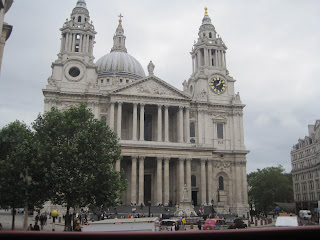For our last class, we visited the British Library once again, this time to take a look at their Centre for Conservation.
Here are a few of the things I learned:
- The Centre for Conservation has been in its current location (an addition to the original British Library) since 2007.
- The centre includes some rather interesting rooms like the Quarantine Room for materials suspected of infestation upon arrival and the Inergen Gas Store Room which is, essentially, a fire-safe room.
- As for the purpose of the centre- 'The principal role of our conservators is to treat damaged or deteriorated items to ensure that they are stable and accessible - both now and in the future - for exhibitions, public programmes and researchers.'
- The Collection Care Department contains interventive conservators (digitization, exhibition, repairs), preventative conservators (storage, pest control, environmental monitoring), conservation scientists, and preservation advisory.
- Preservation Advisory is mainly designed to support other libraries and archives in the area of preservation. They offer enquiry services, training events, preservation management and the like.
- The Conservation Studios are where the magic happens! (In my opinion)
- Conservation concerns, as well as running repairs are addressed and resolved here.
- The studios contain sinks that run with the library's 'own' water- that is, water that is filtered through calcium to conteract acidity.
- There are 38 employees on conservation teams-- only 4 of which are professional gold finishers!



















